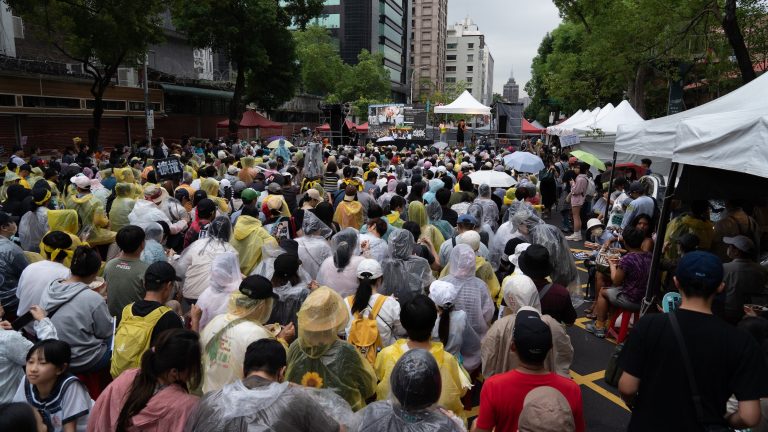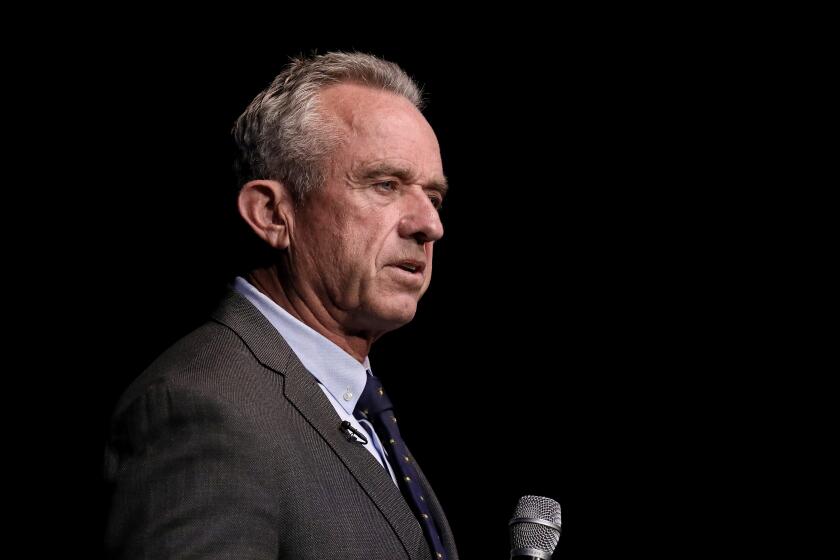OPINION - The extreme-right and European politics: How worried should we be?
The growing electoral appeal of the extreme-right presents a major challenge for liberal democracy and for the European Union (EU).
The era of stability that saw the emergence and consolidation of the EU is now over
Gerard Delanty |19.06.2024 -
People attend a demonstration against far-right and racism under the theme of “A Democratic Europe” in the Deutz district before the European Parliament elections in Cologne, Germany on June 1, 2024.
- The author is a Professor Emeritus of Sociology, University of Sussex, UK. He is the author of Senses of the Future: Conflicting Ideas of the Future in the World Today. (Berlin: De Gruyter, 2024).
-The extreme-right may be at the moment of consolidation in Europe but, arguably, they are also at their highpoint; they are a diverse and volatile group of parties and movements with limited capacity to govern
- If Trump is re-elected later this year, the extreme-right in Europe as elsewhere will find a new source of legitimation; if Russia succeeds in overwhelming Ukraine, the largely pro-Russia extremist parties will gain additional leverage
-If there is a cause for concern, it is less that we will see a takeover by the extreme-right than a failure of governance by the center in the wake of what is increasingly looking like a crisis of governability
ISTANBUL
To understand the outcome of the elections to the European Parliament (EP) it is necessary to see the election in the context of (1) national politics (2) global politics and (3) societal transformation. The extreme-right may be at the moment of consolidation in Europe but, arguably, they are also at their highpoint; they are a diverse and volatile group of parties and movements with limited capacity to govern.
Significant moment in the post-war history of Europe
The recent elections to the European Parliament represent a significant moment in the post-war history of Europe. The growing electoral appeal of the extreme right presents a major challenge for liberal democracy and for the European Union (EU). The era of stability that saw the emergence and consolidation of the EU is now over. The question, however, is how significant the extreme right is and whether we should be worried that what we are witnessing is a dangerous drift towards authoritarianism in Europe in a context of greater instability.
Some contextualization is important. The results of the election, largely expected, can be read in different ways. While ever more voters – and in this instance surprisingly large number of younger voters especially in Germany – supported extreme right-wing parties, the majority of Europeans did not. As is well known, European Parliament elections do not have the same impact as national elections. However, despite the drift to the radical right, it seems that the center ground has prevailed, despite a significant challenge. This does not mean that we can be complacent and think nothing has changed. The extreme right has made significant gains. The Alternative for Germany (AfD), won the second-largest number of votes in Germany, after the center-right opposition. However, the extreme right is not a cohesive bloc, especially in terms of representation in the European Parliament, where it does not speak with one voice.
The Nordic countries, which all experienced a rise in radical right parties, voted for predominately left-green. There is a wide variety of parties across Europe that advocate authoritarianism, from right-wing populist parties to more radical right-wing ones to the harder neo-fascist extreme right. It is a volatile spectrum of forces that has captured much of the ground from established parties of the left and the right, but they are not all neo-fascists.
What is the outlook for the extreme right in European countries?
My sense of the current situation is that we are probably witnessing the highpoint of the extreme right. It may be the case that the extreme right has also reached the point of consolidation, but in view of the volatility of the parties and their electoral support, that is by no means self-evident. Perhaps more clear-cut is the normalization of their political concerns – anti-migration, anti-Green, and anti-EU. However, this normalization is as likely to take place on the national level of the major parties of the right and left who adapt their policies to the extreme right. This may be the ultimate testimony of their influence, leading to a more general drift towards right-wing ideology but not necessarily a shift to the extreme-right taking over. The exception here is Hungary, but then the Fidesz party is more an example of right-wing populism than extreme-right.
If we look at the EU and the wider European area, including the United Kingdom (UK), it is arguably the case that Europe as a whole is more united than divided and that the real divisions are within national countries. Yet, many countries have stepped back from the brink. Poland and Spain have clearly rejected the extreme right in recent national elections. The outcome of the general election in the UK next month will almost certainly lead to a landslide Labour government.
Ireland does not have any significant extreme-right-wing parties. It has instead Sinn Fein, a left-inclined populist party that also is the placeholder for potential radical right-wing voters. Despite the electoral success in the Netherlands of Geert Wilder’s Party For Freedom (PVV) which is more of a right-wing populist party than Extreme Right as such, he was not able to enter government.
France is perhaps the most troubled country. Its large agricultural sector, the source of much discontent, is under threat and probably unsustainable in its present organization. The overall picture is that the extreme right has limited capacity for government while having considerable ideological influence as their agendas are becoming increasingly normalized. The lesson of the monumental failure of Brexit is also all too clearly visible. A product of the radical right-wing politics, it has been a demonstrable failure and a warning to others not to follow.
Why is the extreme right on the rise?
There are two additional considerations. The rise of the extreme right must also be seen in the context of major societal structural change and in the context of global politics. Europe, like much of the rest of the world, is undergoing major societal upheaval as a result of the double transition to the digital economy and the green economy, a transition that is occurring in the context of climate change and now insecurity due to the need for increased military expenditure for defense against Russia. This is all unfolding in the context of major demographic shifts and the collapse of the possibility of an inclusive society. The nation has become a zone of struggle and division.
The other context is the global one whereby the world, at least the Northern Hemisphere, is re-aligning into two blocs, the Western liberal democracies and authoritarian states in Asia, with Russia and China at the center of these. In this shift in the balance of world power, there is much instability and uncertainty. Ukraine and Donald Trump in the United States (US) are such instances of global volatility and reference points for the extreme right, but with unclear consequences how these will play out. If Trump is re-elected later this year, the extreme right in Europe as elsewhere will find a new source of legitimation; if Russia succeeds in overwhelming Ukraine, the largely pro-Russia extremist parties will gain additional leverage.
What happens if the rise of extreme-rights is successful?
The success of the extreme right can be attributed to their ability to express all kinds of social grievances without offering solutions. They are receptacles of discontent that are particularly attractive to voters of authoritarian dispositions. They appeal especially both to those who tend to see their situation as unfavorable – due to falling standards of living, rising cost of living, housing crisis, stagnant wages, and loss of social status – and to those who are prone to resentment regardless of their situation.
The extreme right are product of inchoate anger which easily combines with a cultural backlash against anything that is representative of progress. A characteristic of the politics of resentment is that it is not fixed but is volatile and unpredictable. These parties with their focus on the figure of the migrants are more adept at mobilizing discontent than left-wing parties or those of the center since they don’t have to grapple with the problem of solidarity and the challenges of the Green transition. And there is the simple reality that European societies need migrant workers.
My overall conclusion is that the results of the European Parliament elections are in line with the general rise of the extreme right but this is not a cataclysmic moment; future trends are likely to see the continued influence of the extreme right through the normalization of populist politics as the center parties adapt to them. But there are also countertrends and we may be witnessing the high point of the extreme right. If there is a cause for concern, it is less likely that we will see a takeover by the extreme right than a failure of governance by the center in the wake of what is increasingly looking like a crisis of governability.
*Opinions expressed in this article are the author's own and do not necessarily reflect the editorial policy of Anadolu





















